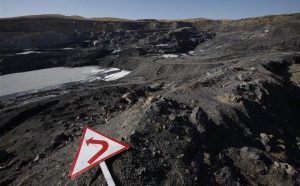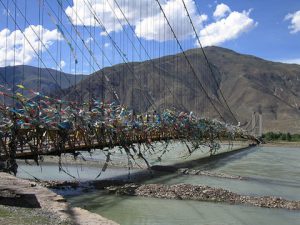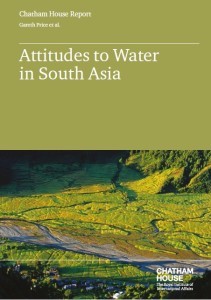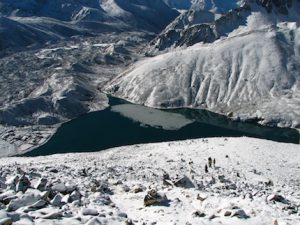From the hay field behind his house, Gunter Jurischka points out the solar panels glittering from the town’s rooftops and the towering wind turbines spinning lazily on the horizon.
Thanks to Germany’s now famous Energiewende (or “energy transition”) programme, this tiny village of 800 souls produces enough electricity to supply 15,000 households from wind, solar and biogas.
But in what should come as a warning signal to countries like China that are rapidly rolling out renewable energy projects, a ruling by the state government earlier this June promises to uproot these villagers. Proschim’s green dream will be bulldozed to make way for a 2,000-hectare, open-cast coal mine.
“We don’t have time for energy from the Middle Ages anymore,” said Jurischka, a weather-beaten former agronomist with piercing eyes and longish salt-and-pepper hair.
It’s beginning to look like he might be right.
Hailed by environmentalists as a model for how the world’s nations can stop global warming, Germany’s Energiewende is designed to virtually eliminate emissions and convert 60% of the country’s energy production to renewables by 2050. But as the concept catches on in nations like China – which now leads the world in green power capacity and investment in renewables – cracks are emerging in the foundations, suggesting focusing on renewables will not be enough.
“Going down the renewables route is good, but not enough to save the climate,” said Patrick Graichen, director of Agora Energiewende, an independent think-tank based in Berlin.
“The popular perception is [that] we’re doing the renewables and that’s what needs to be done…. [But] renewables are only half of the story. The other half is keeping coal beneath the ground.”
Germany has already succeeded in boosting the share of renewables to 25% of its total power production, compared with around 13% in the US and around 20% in China, according to the latest report from the Renewable Energy Policy Network for the 21st Century (REN21). But in what Germans are calling the “Energiewende paradox”, the country’s overall carbon-dioxide emissions rose by 1.2% last year. Meanwhile, instead of a phase-out of conventional power, Germany is expected to add more coal-fired generation capacity this year than it has in over a decade.
“It’s a big step back,” said Anike Peters, a campaigner at Greenpeace Germany. “If the politicians want a real Energiewende, they should shift away from coal.”
The coming coal boom
The recent German increase in hard, or black, coal is a one-off, driven by low carbon prices in Europe prior to the economic crisis and a race to get projects approved before higher emissions set in, according to longtime Energiewende watchers Arne Jungjohann and Craig Morris. But without policy changes, the brown coal of Proschim – called lignite by the energy sector – could see a decade-long boom.
“Germany lacks specific policies to reduce lignite and increase natural gas use,” Jungjohann and Morris conclude in a recent article for the Heinrich Böll Foundation. “Unless that changes, the market is unlikely to bring about a reduction in power production from lignite until the mid-2020s.”
For China, which now burns nearly as much black coal as the rest of world combined according to a Bloomberg energy study, Germany’s problems will come as grim news. China invested more money in renewables than all of Europe in 2013, and for the first time its investments in green energy surpassed its investments in conventional power. But due to rapid economic growth, the world’s factory will more than double its overall power generation by 2030, adding the equivalent of the entire UK power grid every year, according to Bloomberg. Coal will fuel 58% of its production.
Germany’s Energiewende helps to explain why.
The problem Germany faces is that the supply from renewable sources like the sun and wind comes in peaks and valleys, and subsidies for storage technologies have not kept up with those designed to drive green-energy production.
On cloudy, windless days, the country needs the steady electricity supply from coal- or gas-fired generators to keep the lights on and the factories running. Yet when there is an excess, the country can’t use enough of the supply to pump water uphill for later use by hydroelectric plants or to convert water into hydrogen. So on sunny, windy days, windmills and coal-powered turbines alike must be disconnected to prevent the surge blowing fuses across the grid.
At the same time, while German consumers complain about high prices due to the green energy subsidy they see on their monthly electricity bills, the dramatic expansion of capacity has caused wholesale energy prices to plunge.
The combined result is that Germany’s three main conventional power producers – Eon, RWE and Vattenfall – are often selling electricity for less than the amount it costs them to produce it. And paradoxically, as the US shale gas boom drives down coal prices without affecting gas prices in Europe and Asia, they are encouraged to turn to the conventional fuel least suited to supporting the drive toward renewables: lignite, or “brown coal”.
Abundant in Lusatia and the Rhineland, brown coal supplies around 15% of Germany’s energy. Because it’s close enough to the ground to be scraped off the top, rather than dug out in deep mines, it’s the cheapest fuel available, located right next to the power plants that burn it. Moreover, Germany’s grid operates by a so-called “merit order” that takes energy produced by the cheapest fuel first, using power from renewables first, then nuclear, then lignite, then hard coal and only then natural gas. So lignite plants are the last to be taken offline when the supply spikes.
Even then, while natural gas-fired power plants can be stopped and started without much lag time when the wind and solar supply peaks, the most modern coal-fired plants presently in use in Germany must burn at 35% of maximum capacity even when they are officially offline. Worse still, soft brown coal produces 50% more carbon dioxide per kilowatt than black coal and twice as much as natural gas.
“Lignite is the dirtiest fossil fuel, but it has many other disadvantages, because it’s not a good partner for renewable energies,” said Greenpeace’s Peters.
New policies needed
Clearly, both Germany and China need more than yesterday’s feed-in-tariffs and ever higher green-energy production to fight global warming.
In the short term that means grid-preference for flexible but reliable natural gas-power plants instead of cheaper lignite, as well as subsidies for electricity stored in batteries or converted to hydropower or hydrogen – presaging a longer window for the add-ons to their bills that have turned many Germans sour on the Energiewende. German policymakers should also consider taxing carbon or banning new lignite mines, which would allow the producers to keep using the fuel for a decade or more, say experts like Graichen, Jungjohann and Morris.
But in the long term it could mean subsidies for the big conventional power companies today viewed as the enemy – effectively paying them to keep operating plants that will never make a profit because they only exist for the days that the wind doesn’t blow.







